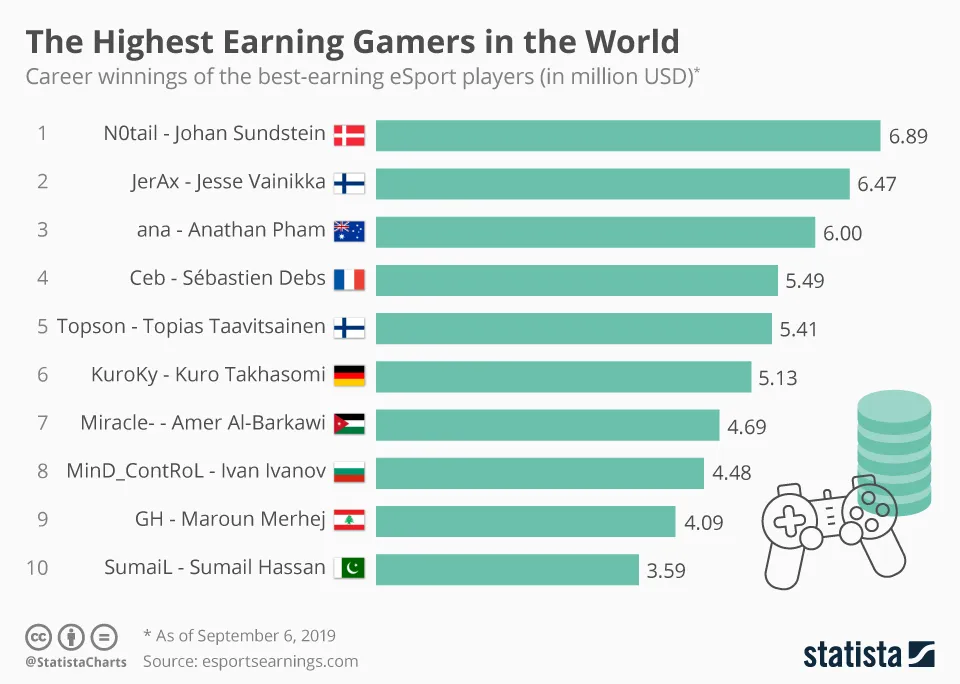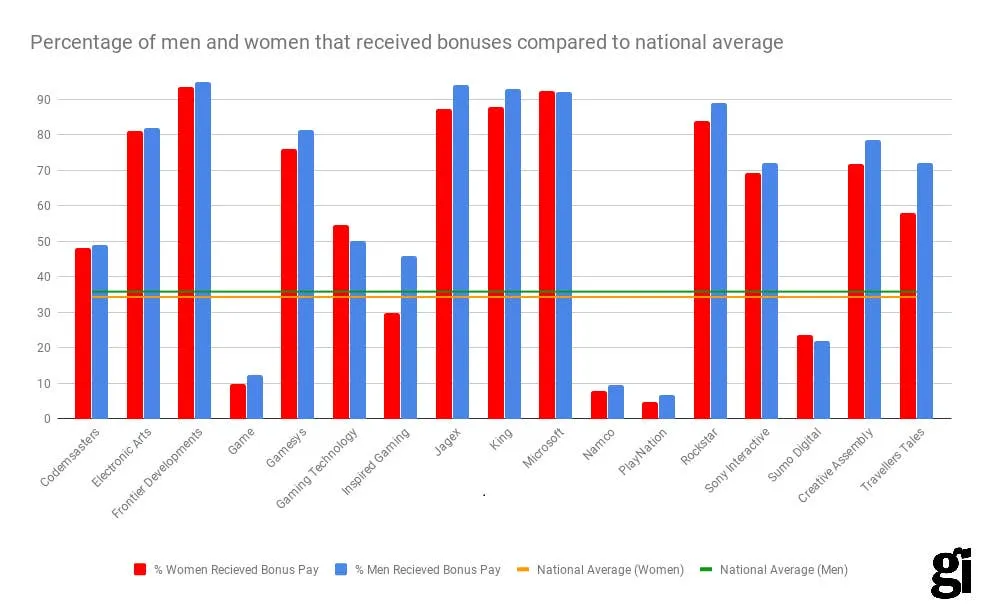In recent years, esports has taken the gaming world by storm. What used to be a niche hobby has now become a global sensation, with professional gamers competing in tournaments for millions of dollars in prize money. As this industry continues to grow, many people are curious about the earning potential of esports gamers. In this article, we will dive into the world of esports earnings and explore just how much these players can make.

Overview of Esports Earnings
Before we delve into the details, let’s first take a look at the big picture when it comes to esports earnings. According to the latest statistics from Play Today, the total esports earnings in 2020 reached a staggering $950 million, a significant increase from the previous year. This number is expected to continue growing, with experts predicting that the esports market will reach $1.5 billion by 2023.
The majority of these earnings come from tournament winnings, sponsorships, and streaming revenue. Top players in popular games like League of Legends, Dota 2, and Counter-Strike: Global Offensive can earn hundreds of thousands, if not millions, of dollars each year. However, as with any sport, only a small percentage of players make it to the top and achieve these high earnings. Let’s take a closer look at the different factors that contribute to an esports player’s income.
Tournament Winnings
One of the primary sources of income for esports gamers is through tournament winnings. Just like traditional sports, players compete in tournaments to showcase their skills and win prize money. The prize pools for these events can vary greatly, with some smaller tournaments offering a few thousand dollars and larger ones offering millions.
For example, the International 2019, a Dota 2 tournament, had a prize pool of over $34 million, with the winning team taking home $15.6 million. On the other hand, a smaller tournament like DreamHack Open Summer 2020, a Counter-Strike: Global Offensive event, had a prize pool of $90,000, with the winning team receiving $35,000.
While these numbers may seem impressive, it’s worth noting that only a small percentage of players actually earn significant amounts from tournament winnings. The top teams in the world dominate these events and take home the majority of the prize money, leaving little for the rest of the participants. This brings us to the next factor in esports earnings – sponsorships.
Sponsorships
As esports has gained popularity, more and more companies have begun investing in this industry. One of the main ways they do this is through sponsorships. Esports teams and individual players can secure deals with companies to promote their products or services in exchange for financial support.
Sponsorship deals can range from a few thousand dollars to millions, depending on the brand, player/team, and the terms of the contract. These deals are highly sought after by players as they provide a stable and predictable source of income. However, securing a sponsorship can be challenging, as companies often look for players with a large following and proven success in tournaments.
Another form of sponsorship that is becoming increasingly popular in the esports world is personal branding. Players can build their own brand and monetize it through merchandise sales, streaming, and partnerships with companies. This allows them to have more control over their earnings and not rely solely on tournament winnings or team sponsorships.
Streaming Revenue
Streaming platforms like Twitch and YouTube have become a significant source of income for esports gamers. These platforms allow players to live stream their gameplay, interact with their audience, and earn revenue through subscriptions, donations, and sponsorships.
Top streamers can make anywhere from $500,000 to $1.5 million per year, according to a report by The Verge. This revenue can come from various sources, such as subscription fees, ad revenue, and sponsorships. For example, a popular Twitch streamer, Tyler “Ninja” Blevins, reportedly earns around $500,000 per month through his streaming career.
Factors Affecting Esports Earnings
As we have seen, there are various ways for esports gamers to earn money. However, the amount they make can vary greatly depending on several factors. Let’s take a look at some of the main factors that affect an esports player’s earnings.
Game Popularity
The popularity of a game plays a significant role in how much its players can earn. Games with a large player base tend to have larger prize pools and more sponsorship opportunities. Popular games like League of Legends and Dota 2 have well-established esports scenes with millions of dollars in prize money each year, providing players with ample earning potential.
On the other hand, newer or less popular games may not have as many opportunities for players to earn money. Smaller prize pools and fewer sponsorship deals mean that players will have a harder time making a living from these games.
Skill Level & Team Success
In any competitive environment, those who perform well are rewarded accordingly. The same goes for esports. Players who consistently rank highly in tournaments and win championships can earn significant sums of money through prize winnings and sponsorships.
Furthermore, being part of a successful team can also impact an esports player’s earnings. Teams that regularly place high in tournaments are more likely to receive sponsorships and have a larger fan base, leading to higher earnings for their players. Conversely, individual players who are part of a struggling team may find it challenging to secure sponsorships and earn a decent income.
Streaming & Personal Branding
While not all esports players stream their gameplay, those who do can benefit greatly from it. As mentioned earlier, streaming platforms offer multiple ways for players to earn money outside of tournaments and sponsorships. However, building a successful streaming career requires dedication, consistency, and marketability.
Having a strong personal brand can also impact an esports player’s earnings. Players who have a large following and a well-established brand are more attractive to sponsors and can earn significant amounts through merchandise sales and other partnerships.
The Highest-Paid Esports Gamers

Now that we have a better understanding of the factors affecting esports earnings let’s take a look at some of the highest-paid players in the industry.
Kuro “KuroKy” Takhasomi
At the top of the list is Kuro “KuroKy” Takhasomi, a Dota 2 player from Germany. With $5.1 million in earnings, he holds the title for the highest-earning esports player of all time. KuroKy has been competing professionally since 2010 and has won numerous championships, including The International 2017.
He is currently the captain of Team Nigma, one of the most successful Dota 2 teams, and has secured sponsorship deals with brands like Logitech and Mercedes-Benz. Along with his impressive tournament winnings, KuroKy is also known for his successful streaming career, making him one of the most well-rounded and highest-paid esports players.
Johan “N0tail” Sundstein
Next on the list is another Dota 2 player, Johan “N0tail” Sundstein from Denmark. With $6.9 million in earnings, he is the second-highest-earning esports player of all time. N0tail is the founder and captain of OG, a team that has made history by winning back-to-back The International championships in 2018 and 2019.
N0tail is not only known for his impressive gameplay but also for his charismatic personality, making him a fan favorite and a sought-after streamer and influencer. He also has lucrative sponsorship deals with companies like Red Bull and Secretlab, further adding to his impressive earnings.
Lee “Faker” Sang-hyeok
The highest-earning League of Legends player is Lee “Faker” Sang-hyeok from South Korea. With $1.2 million in tournament winnings and an estimated $3 million in streaming revenue, Faker has earned a grand total of $4.2 million. He is considered one of the best players in the world and has won multiple championships with his team, SK Telecom T1.
Faker also has several sponsorship deals with companies like Nike, SK Telecom, and T1 Entertainment & Sports, making him one of the most recognized and highest-paid esports players globally.
The Gender Gap in Esports Earnings

Like many other industries, there is a significant gender gap when it comes to esports earnings. According to a report by Statista, only three women have made it onto the list of the top 100 highest-earning esports players. This discrepancy can be attributed to various factors, including the representation of women in the industry and the lack of opportunities for female gamers.
However, efforts are being made to close this gap and create more inclusive and equal opportunities for all gamers. In 2020, the first all-female Valorant tournament took place with a prize pool of $50,000, showcasing the potential for growth and inclusion in esports.
Conclusion
In conclusion, while the earnings of esports players can vary greatly, there is no denying that the industry offers lucrative opportunities for those who reach the top. With the continued growth and popularity of esports, we can expect to see even higher earnings for players in the future. As more companies invest in this market and the audience continues to grow, the earning potential for esports players will undoubtedly increase as well.








